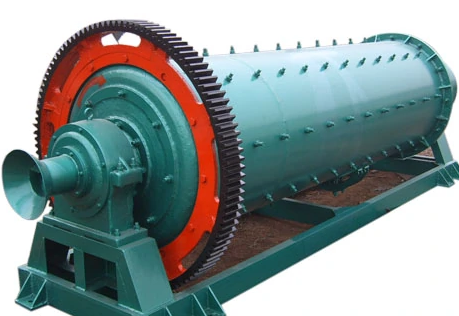Ball mills can be divided into grid-type ball mills and overflow-type ball mills according to different discharge methods. They are the most common mills used in concentrators at present. Conical ball mills are eliminated due to their low productivity, many types of linings and difficult maintenance. It is still used in some old concentrators. Among them, the overflow type ball mill is mainly composed of a cylinder body, an end cover, a main bearing, a hollow journal, a transmission gear and a ore feeder. The cylinder body 1 is welded with steel plates with a thickness of about 15-36mm. There are cast steel flanges at both ends of the cylinder body. Bolts are used to connect the end covers 2 and 3 and the flanges together.

The two must be precise Machined and fitted, as the hollow journals that carry the grinder mass are welded to the end caps. There are 1-2 personal holes on the simplified for maintenance and replacement of the liner. A lining plate 5 is laid inside the cylinder body and the end cover. The hollow journal on the end cover is supported on the main bearing 4 . The main bearing is the most commonly used sliding bearing, which has a large diameter but a short length. The bearing pad is cast with babbitt alloy, and the difference from the general sliding bearing is that only the lower half has the bearing pad. The entire bearing is made of cast iron except the bearing bush is cast with babbitt alloy. Due to the large span and load of the ball mill, a certain degree of deflection will occur, and it is difficult to ensure accurate concentricity due to manufacturing and assembly errors. Therefore, the main bearing is made of a self-aligning sliding bearing. Slide out of the bearing seat and place a cylindrical pin in the center of the spherical surface of the bearing seat and the shaft.
